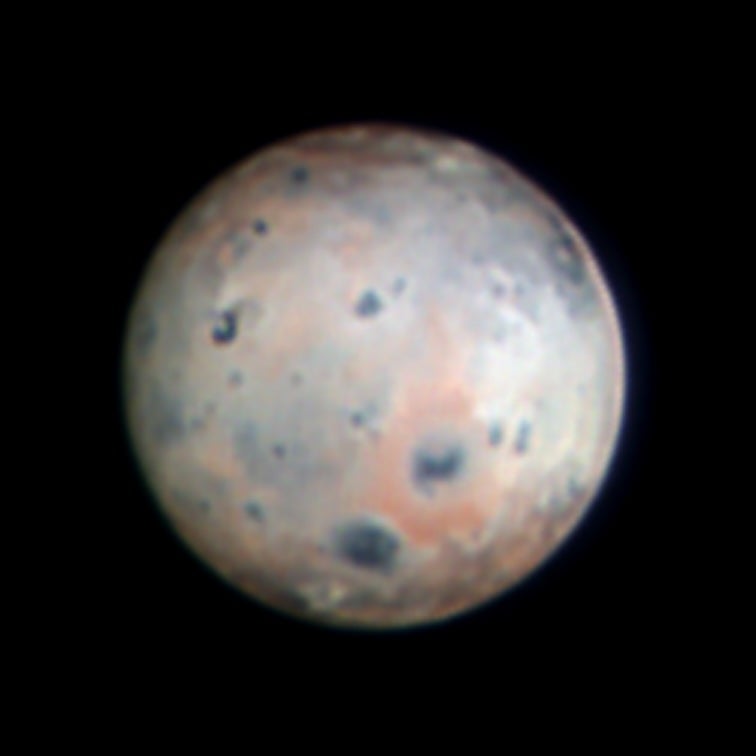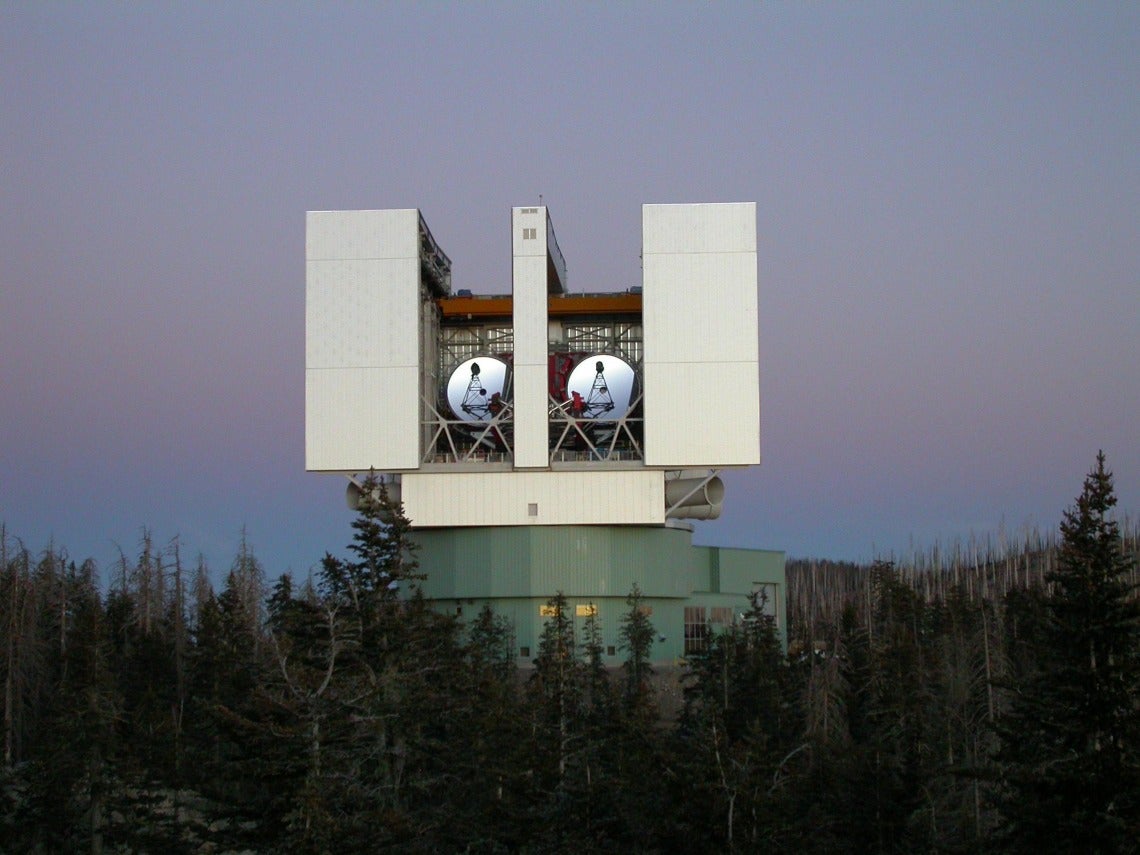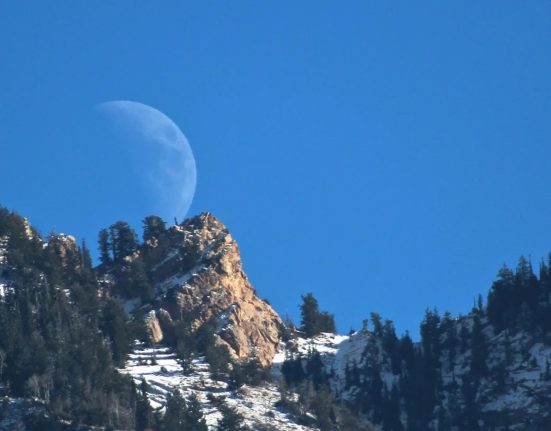An upgrade to the Large Binocular Telescope has captured views of volcanoes in action on Jupiter's innermost main moon.

Jupiter's moon Io, imaged by SHARK-VIS on January 10, 2024. The image combines three spectral bands (infrared, red and yellow) to highlight the reddish ring around the Pele volcano (below and to the right of the center of the moon) and the white ring around Pillan Patera, to the right of Pele. Credit: INAF/Large Binocular Telescope Observatory/Georgia State University; IRV band observations using SHARK-VIS/F. Pedichini; processing by D. Hope, S. Jefferies, G. Li Causi.
The volcanic world of Io has been a hot topic lately. Earlier this year, NASA's Juno mission approached the Moon and got stuck. close-up views from part of its volcanic activity. However, the most recent, high-resolution images of the Jovian object have been taken a little closer to home, thanks to a new planetary camera mounted on the Large Binocular Telescope (LBT) on Arizona's Mount Graham.
in a article to be published on June 4 in Geophysical research letters, an American-Italian team captured the aftermath of a volcano plume that spewed material onto the surface of Io. The images were produced by SHARK-VIS, an instrument that saw first light in 2023. Researchers were able to capture features as small as 50 miles (80 kilometers) across, a resolution previously only achievable from spacecraft. “This is equivalent to taking a photograph of a dime-sized object from 100 miles (161 kilometers) away,” said a University of Arizona researcher. Press release noted.
SHARK-VIS is a visible spectrum instrument built by the Italian National Institute of Astrophysics in Rome. The camera, along with its infrared companion, SHARK-NIR, was designed to capture fast, ultra-low noise images. It works in conjunction with the LBT's adaptive optics system, which adjusts the shape of its twin secondary mirrors in real time to correct distortion caused by atmospheric turbulence (or vision). In processing, algorithms choose the clearest images and combine them for scientists to analyze, a technique called lucky images.
“Io was chosen as a test case because it was known to exhibit dramatic surface changes that would be detectable with SHARK's spatial resolution,” says Ashley Davies, senior scientist for planetary geosciences at NASA's Jet Propulsion Laboratory. Astronomy in an email. “It just so happens that the first time we looked at Io we discovered that a big change had really occurred.”
Scientists identified this event in images taken in late 2023 and early 2024. In them, researchers could see an active volcano just south of the moon's equator called Pele. Its gas-rich column leaves a ring of red sulfur deposits 1,000 kilometers wide around it. However, when another nearby volcano called Pillan Patera erupted, it resurfaced the area with a combination of dark lava and white deposits of sulfur dioxide.

While infrared images can detect the hot glow of fresh magma, visible images like those taken by SHARK-VIS are “essential for identifying both the locations of eruptions and surface changes not detectable in the infrared, such as deposits.” of new columns,” said Imke de Pater. , an astronomer at the University of California, Berkeley, in the news release.
When adaptive optics systems were first developed for ground-based observatories decades ago, they were only practical in infrared light, where it was easier to make the quick corrections needed to the mirror shape to keep up with the effects of turbulent air. But SHARK-VIS is part of a new wave of adaptive optics systems that can work in visible light and nearly eliminate the effects of poor vision.
Researchers hope to release SHARK-VIS on other objects in the solar system, including moons, planets and asteroids. “We have already observed some of them, and the data is currently being analyzed, and we are planning to observe more,” SHARK-VIS instrument scientist Simone Antoniucci said in the statement.












Leave feedback about this